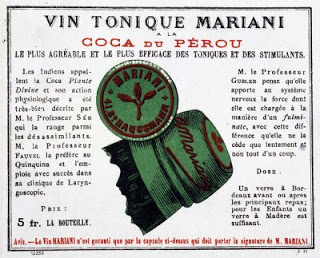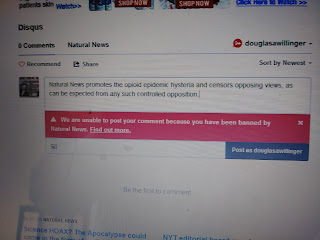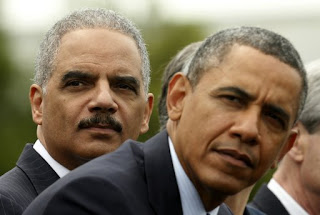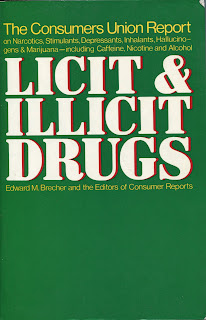Vin Mariani- The Latter Years
Historical accounts of Vin Mariani focus perhaps exclusively upon the years prior to the prohibition era.
Here is a bit of the history following the 1906 U.S. Food and Drug Act that effectively blacklisted cocaine via including it on a list of ingredients that had to be labeled, though not including the other popularly used stimulants of caffeine and nicotine.
1907: Vin Mariani for the U.S. market deleted the cocaine, adding a rear side label- see below. I don't yet have information if they continued to provide the regular version as an alternative.
GUARANTEED BY MARIANI & Co. UNDER THE FOOD AND DRUGS ACT JUNE 30, 1906; SERIAL No. 448
VIN MARIANI
[MARIANI WINE]
17 PER CENT ALCOHOL BY VOLUME
AN IMPORTED FRENCH BORDEAUX WINE WITH A SPECIAL
PROCESSING OF LEAVES OF ERYTHROXYLON COCA
PREPARED AND BOTTLED AT OUR NEW YORK FACILITY
MARIANI AND COMPANY
PARIS, FRANCE: 41 Boulevard Haussman. NEW YORK: 52 West 15th Street
"THE STANDARD OF MARIANI PREPARATIONS, established by us in France nearly half a century, ago is based upon the adaptation of Coca as employed by the Andeans during hundreds of years as a force sustainer. WE HAVE ALWAYS emphasized our use of Coca leaves chosen for AROMATIC and MEDICINAL qualities and, as we have never considered the negligible amount of alkaloid in such leaves essential to our formula, our processing completely eliminates it from our preparation”
That was actually a bad move for it implied that cocaine was something that did not belong in dilute amounts, never-mind that the real problems with cocaine came with it in concentrated forms, and that there was never any showing that cocaine in dilute form was any more "dangerous" than such other naturally occurring stimulant alkaloids as caffeine and nicotine,, both used in dilute form and both likewise poisonous in concentrated forms.
The 1906 Act neither banned cocaine as an ingredient in food or drug products. It simply required labeling the cocaine content- itself a reasonable requirement, though actually misleading - by not likewise require the labeling of caffeine and nicotine it created a false assumption of cocaine being somehow more dangerous in likewise dilute form.
However the 1906 Act would serve as a means to bring about the deletion of dilute cocaine, via its un-fetted delegation of regulatory power to declare an ingredient unsafe to the Bureau of Chemistry of the U.S.D.A.
That started happening in 1907 with U.S.D.A. prosecutions not only against manufacturers for 'mislabeling' for failing to label the cocaine content, but others for adulteration for containing cocaine- even if properly label, with the U.S.D.A. declaring without basis that such cocaine content was dangerous. For instance, though Wiley was well known for his "poison squad" experimentations upon food containing various substances used as preservatives, he apparently never conducted any such researching upon beverages that contained cocaine.
Such 'adulteration' prosecutions by the U.S.D.A. were done with products sold as foods. Never-mind that the 1906 Act's inclusion of cocaine as an ingredient that had to be labeled in food and drug products implicitly meant that it remained legal.
Perhaps as a way of bolstering his authority to ban substances by declaring them unsafe Harvey Wiley initiated a famous prosecution against the Coca Cola Company for containing added caffeine- that is caffeine in pure form as a dilute ingredient- for he not only never targeted Coffee or Tea but actually praised them.
Such prosecutions would only go after products sold as foods, and hence could conceivably be sold as drugs. However the political campaign being carried out by the U.S.D.A. Chemistry Bureau Chief Harvey Wiley - who was also prominent in the American Medical Association and its allied American Pharmaceutical Association - also targeted cocaine containing medicinal preparations via a massive lobbying effort of 'model legislation' for the individual U.S. States to ban the sale of such outside of a physicians prescription, with such prescriptions being mandated a s"non-refillable".
Political machinations in the 1908 to 1914 period would work upon amending the 1906 Act to outright ban products containing any amount of cocaine and to severely restrict those containing at least above a certain amount of opiates- efforts that culminated in 1914 with the U.S. Harrison Act. While the particular political fear of cocaine was sold in newspapers as a fear of Negroes in the south, a 1910 U.S.D.A. Farmer Bulletin article more honestly presented the U.S.D.A.'s fear of Coca being sold and used as a "Tobacco Habit Cure".
That Act would exempt products containing below a certain amount of opiates though not of cocaine from over the counter -- that is without a physician's prescription -- from a deceptively innocuous appearing to some tax requirement, to be administered by a U.S. Department of Treasury that was not actually required to honor requests for market participation thus effectively empowering that entity to enact a virtually blanket prohibition. This delegation of regulatory authority would be upheld by a U.S. Judge who had served in the U.S. Congress from 1909 until his resignation in 1914, and who was present in deliberations regarding amending the 1906 Food and Drug Act leading to the crafting of the 1914 Harrison Act: James Harry Covington.
As requiring non refillable prescriptions for products containing any amount of cocaine effectively made their sale and use impractical -- e.g. by requiring a separate physicians visit for each non refillable prescription -- cocaine containing preparations dissipated from OTC sales, with any such prescriptions effectively confined to a far narrower spectrum of uses, such as the use of the more concentrated preparations in surgical anesthesia. Any physician considering prescriptions outside of such a narrow range of uses would likewise soon be effectively cowed by the U.S. Treasury Department's abuse of its delegated regulatory authority to essentially practice medicine without a license.
Other nations would adopt such polices, though for a time some exempted dilute cocaine products as Vin Mariani. Conceivably, Vin Mariani was produced in different versions for different market jurisdictions, though such information so far remains elusive.
http://freedomofmedicineanddiet.blogspot.com/2008/03/us-state-departments-opium-convention.html
1938
1938
1946- this shows the classic Vin Mariani bottle
1938
According to an article by Walter Helfland, Vin Mariani was sold in some form until 1963.








Comments
Post a Comment